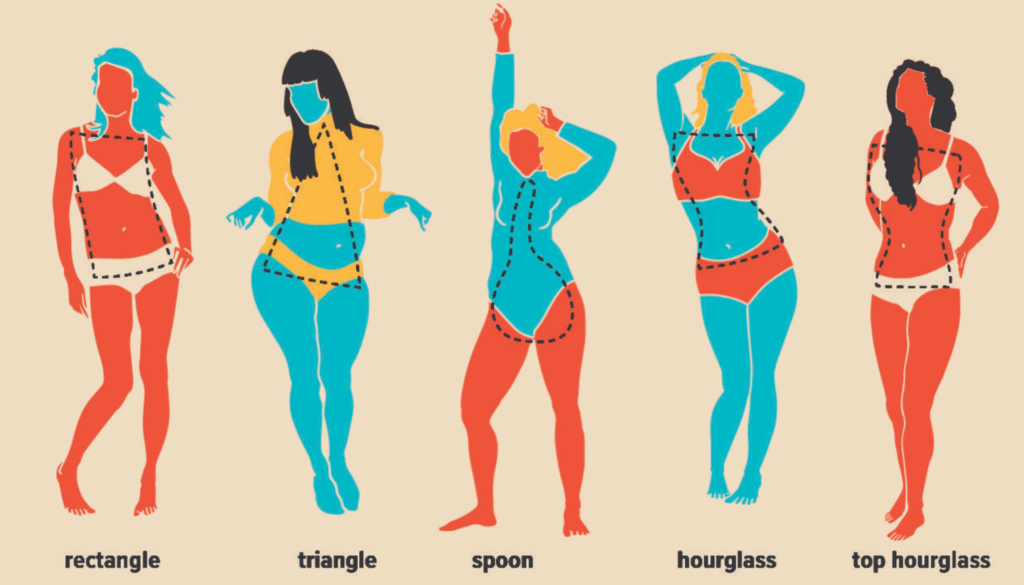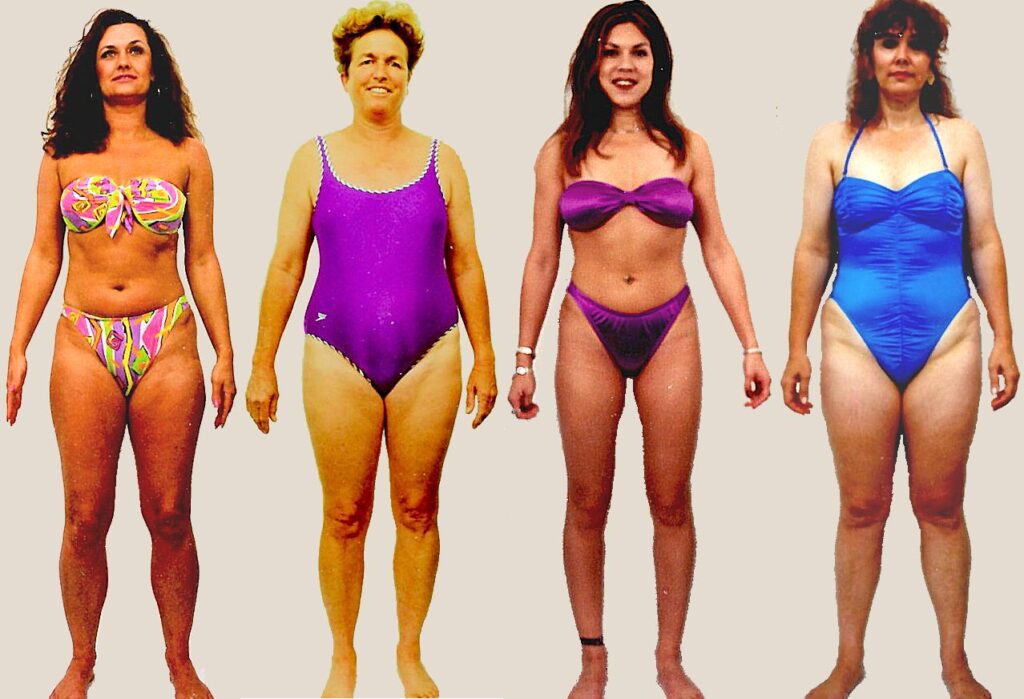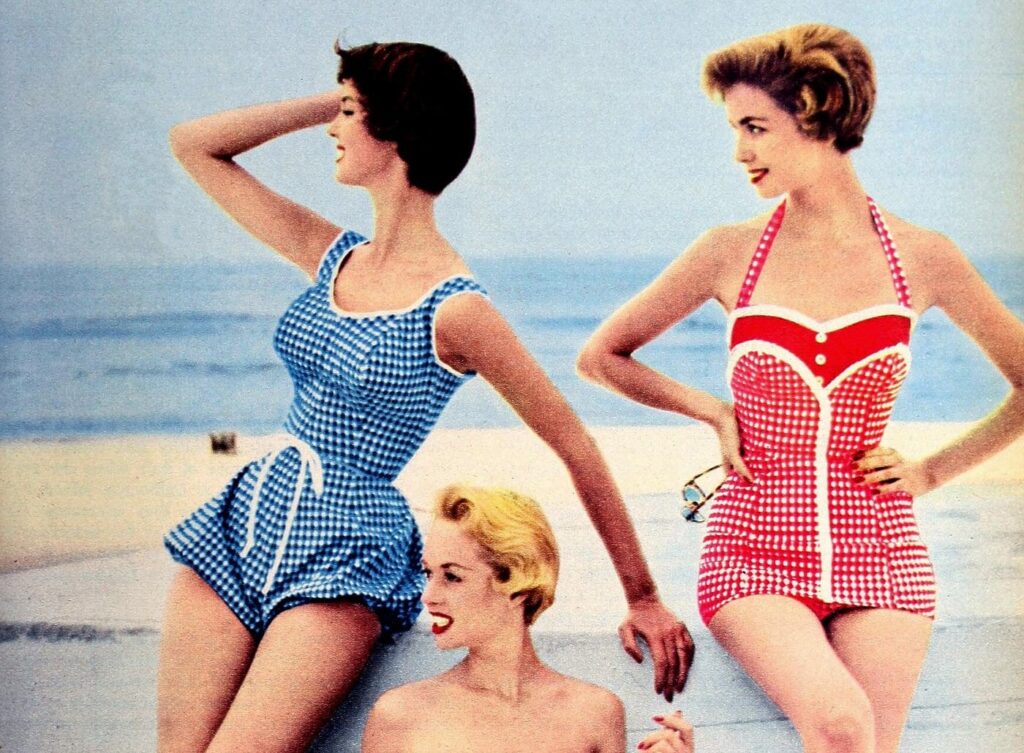The ‘ideal’ woman’s body today is not the ideal that was years back. Views and opinions around beauty and body shape have changed a great deal over the past years. The body of women was and is still shaped by social and cultural values and a natural becoming is somewhat out of question. This has seen the invention of various means among the womenfolk to conform to the standards that the society had set through the fashion industry, media, and other social dictates.
Evidence from sculptures that were curved millenniums back reveals that curves and plumps were the real deal then, with an emphasis on the uppers. Years on and in the 20th century the society especially the westerners evolved to preferring a top-to-bottom slimmer profile, and later emphasis on the backside. Although still far off, society in recent times is slowly accepting the diversity of women’s body shape thanks to a few people who have come out to openly defy cultural and social dictates that society has placed on the woman’s body.
Let’s have an in-depth look at how the standards of a woman’s body shape have evolved over the years.
The 16th-18th-century woman

The 16th and the 17th century was an era of curves. During this era, Peter Paul Rubens, a renowned artist, defined the woman by the term ‘Rubenesque’ to depict a rounded and curvaceous figure which was often revealed in his paintings. Not only him but also other artists like Rembrandt and Titian. Then, plump bodies, flabby stomachs, and large breasts were an inspiration among the womenfolk.
This period was characterized by a shortage of food and other resources. As such, those with plump rounded figures could be seen as wealthy and having enough to eat to put on some weight. They ended up being plump and rounded and were healthier and more fertile than the others. This explains why plump figures were envied. This figure was evidenced in the Venus figurines, small statues that were discovered in Europe around 23,000 and 25,000 years ago, that represented women. This was also around the time when corsets became fashionable. They were used to support her breasts.
As the perceptions of the woman’s body shape evolved in the years that followed, the design of the corset also changed to match these perceptions.
The 19th-century woman

Plump and curvaceous evolved to cone-shaped in the 19th century. As we had mentioned, corsets also changed in design to become shorter and cone-shaped to match this trend. They were designed to push up the breasts to bring out a more pronounced narrow waist. Additionally, the woman became more delicate which was revealed in her small feet and fingers. While this depicted weakness but also good morals and status in the society
High-waist dresses with high packed sleeves and a padded breast area became the rage as focus shifted from the bosom to the waist, hips, and behind. The hourglass became the shape of the time. This reflects well in Charles Dana Gibson’s drawings of women who were tall, voluptuous, and had slim waists hence the phrase, ‘the Gibson Girl’.
The 20th-century woman

The 20th century saw a shift in focus from youngish, delicate, and frail to slender, skinny, and sporty. Tiny waists were no longer in fashion and the hips, behind, and bust was toned down to look tighter.
The 1920’s woman
Tighter flatter chest, a waist not as pronounced as in the previous era, and an overall skinny athletic figure was the 20s feminine ideal. Short hair became stylish as it complemented this figure. Corsets were ditched for garments that made the chest look flat.
However, this brought in a new twist as women embarked on ridiculous diet-plans and exercise regimes. The emergence of mass media did not help the situation by placing a strong emphasis on slenderness and soon a big percentage of women were caught up in a weight loss trap in a bid to transform their body shapes to society’s ideal. This was the beginning of eating disorders among women.
In fact, the period between the 20s and the 80s recorded the highest statistics of eating disorders.
The 1940’s woman
Slender did not end with the 20s as women now shifted to have slimmer legs. On the other hand, this period saw the return of larger breasts and this time round fuller and alert. Stockings and bullet-bras were literally flying off the shelves as fashion trends evolved to accommodate this new development.
The 1960’s woman
The 60s had rather alarming statistics of eating disorders including anorexia nervosa as slenderness went to a whole new level. Women, rather the society, lost value for hips and bust and shifted to everything slim. Sadly, women did everything to settle for the extra slim physiques. Apparently, the thin string-bean ideal would be carried down years as women’s struggles continued. This became a key growth factor for the diet and supplements industry. Also, fashion models like Lesley Lawson a.k.a Twiggy rose and thrived in this era, thanks to their slender body shape.
Seeing the effect that the ideal string-bean figure had on women, a women’s rights movement began that would try and bring sanity back to the life of the woman.
The 1980’s woman
The 80s saw the return of strength in women’s lives. Away from extreme diets and into toned muscles and broad shoulders. Women were still slender but not unhealthy. They engaged in muscle-building exercise regimes with a special focus on hands, legs, and shoulders to bring out an image that depicted energy.
Fashion evolved to padded shoulder outfits and models like Naomi Campbell came into the scene.
The 1990’s women
90s society detested obesity. Apart from the media hailing slim sports body figures, those that were obese were deemed lazy, greedy, unhealthy, and not fit for relationships. Still, all these put together created an unrealistic almost impossible expectation on the woman.
Obesity statistics were rising and there was a need to create awareness of its health risks. This included conditions like diabetes, arthritis, heart disease, and stroke. Obesity cases were increasing but it is anorexia nervosa that was responsible for more casualties.
In terms of fashion, this was the era of short skirts which when worn drew attention to the long slim legs and the ‘waif’ figure came to birth with models like Kate Moss exemplifying it. Artists like Pablo Picasso and Henri Matisse portrayed this in their paintings.
21st-century woman

Thin was still an ideal that had gone global to countries like India and China. It had a stronger influence in urban and developed areas. As such, the early 21st-century woman might have been dissatisfied with her body shape to the extent of daring to try options like cosmetic surgery. There were more psychologically disturbed women engaged in disorderly eating and excessive body conditioning exercise programs to match up the societal ideal.
Movements that challenged the thin body figures that the media portrayed as ideal began to gain ground and yield some success. A study that was conducted around this time revealed that most participants who were obese were dissatisfied with their body sizes and desired to be slender while those that were slim and underweight desired to be fatter. For instance, the outrage expressed by women over the ‘beach body’ advertisement in London. This extended to New York and to other cities across the world with women now being more educated and aware of the risk of thinness.
A contemporary woman – embracing diversity

The period after the 90s was a period of embracing diversity. Women were more enlightened and different types of bodies across the world are celebrated just as they are without much pressure to conform. Different body types today are a representation of the diverse cultures of the world.
With the advent of social media, there are widespread awareness campaigns on the different types of body shapes and the need for healthy eating and a healthy lifestyle. The media still does have ideals that influence women especially the teens negatively but not as rampant as in the previous eras. For instance, a very influential media include the ‘keeping up with Kardashians’ show that was first aired in 2007 in the United States.
A new trend that is gaining traction fast is the appreciation of plus-size bodies. Plus-size models like Roby Lawley who was featured in 2015 in sports. Many others have been featured on runways, fashion magazines, reality shows, and in other quarters. Mattel, the toy company that produces Barbie dolls has also ventured into the production of dolls with diverse body types.
Another trend that is typical of the contemporary woman is the selfie trend entrenched in the rise of social media platforms like Instagram, Youtube, and Facebook. This may have both good and bad influences on the current generation of women as some, particularly the teens are inclined to developing low self-esteem. However, the same media in concerted efforts with parents and other institutions have come out to promote positivity.
Elements that define body types

The most common measurement formula used in defining different body types is the BWH (Bust, Waist, and Hips) which takes the circumference measurement of each. However, the shoulder is also an important measurement that is usually taken into consideration. Usually, the waist is the smallest of all the measurements.
- Shoulders are measured with a tape measure placed on one tip around the back to the same tip just at the top of the shoulders to give you the widest circumference measurement of the shoulder.
- . To take the bust measurement, the tape measure is wrapped around the back and front such that it passes on top of the fullest part of the breasts. To measure the breast cups, the measuring tape is placed across the crest of the breast and then the difference between the bust and the crest measurements is calculated.
- . The measurement is taken at the point between the last palpable rib and the top of the iliac crest (the smallest part of the waist) is taken. In other words, the measuring tape should pass flat on the back round to the top of the belly button.
- . The hip measurement is taken by placing one tip of the measuring tape right beneath the hip bone (the fullest part of the hip) and then passing it flat around the fullest part of the butt, to the front and then back to the start point.
Women’s body shapes

Also known as the apple shape, the inverted triangle is characterized by a shape that is larger bust or shoulders and narrows down at the hips. It is a typical athletic figure
Ideally, the bust or shoulder measurements should less than 5% bigger than the hip measurements.
For the rectangle body shape, the waist, bust, and hip measurements are almost the same size to give one a sort of straight body without much waist definition or curves.
Also known as the pear shape, the triangle body shape is somewhat the opposite of the inverted triangle with smaller uppers and broader lowers. It features larger hips down to the thighs, a well-defined waist, and slimmer arms and shoulders.
Ideally, the hip measurement is more than 5% bigger than the bust and shoulder measurements.
The hourglass shape features almost the same measurements for the hips and shoulders with a narrow well-defined waist.
The waist measurement is usually 25% smaller than the measurements of the hips and the bust or the shoulders.
Conclusion
The social society, media, and culture have played a significant influence on women with changing views on the ‘ideal’ figure hence the big difference between the ideal and the real. At one point a small well-defined waistline was the rage, another time an athletic physique became the preference, and on and on evolution happened.
Thankfully, today women are more aware and educated on diverse body shapes, cultures, and on other topics around women’s beauty, figure, and fashion. While some, especially the teens, can be influenced negatively by social media, there are several avenues of preaching positive thinking and highlighting special features about one’s body without necessarily conforming to society’s pressure.

